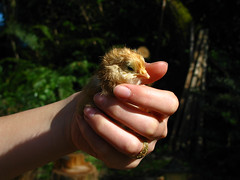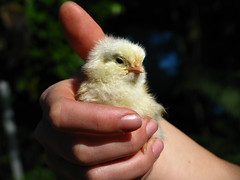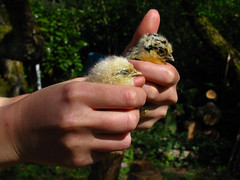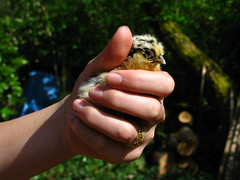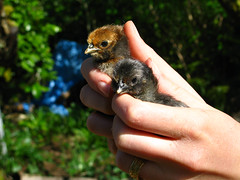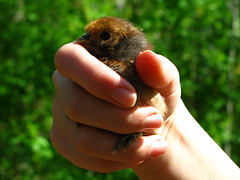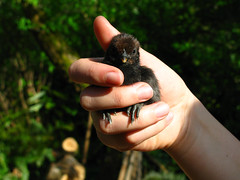
‘12
Lawn-Mowing Services

Horses are very enthusiastic about mowing the lawn.
We stay pretty busy, and sometimes basic things we ought to have done slip through our fingers. Mowing the lawn's a good example: The horses take care of their pasture (you could guess that the grass in there isn't getting very tall at all), and the chickens nibble down the greenery around the henhouse and the old orchard. The rest of the property, on the other hand, is lush and long and a bit wild. The grass assiduously weaves a tapestry over the scars of scotch broom and blackberry habitation, with knots of blades springing up to thigh-height.
Realizing that the greenery was leaving us behind, we were inspired to action. We set up temporary paddocks around the tall grass and blackberries that we don't want to grow back. We've been pasturing the horses there for a few hours during the day, letting them eat until the grass is low, then moving the paddock somewhere else. I realize that horses have been eating grass since time began, but it's still convenient that they can save us some work and fossil fuel.

An errant amphibian: part of the evening's chorus?
Lest you think that we shirk our lawn-trimming duties entirely, let me recount a tangential encounter. A few days ago, while Sola was mowing the grass and horsetails, she disturbed a small creature, who hopped away. The retreat was just barely too maundering. We managed to catch the poor fellow, and identified him as a Northern Red-Legged Frog. Though we were excited to discover a possible contributor to our evening frog-song, he was disconsolate in captivity. We returned him to his habitat — a muddy, grass-choked pool. Happy bug hunting!
‘12
Auspicious Apples

The old Gravenstein tree was the first to start blooming.
It's been a few days now since I've posted, which makes it feel like nothing much has happened. In fact, just the opposite is true. My back reminds me at every available moment that we're making good progress digging garden beds, and a quick glance into the yard reminds me of all the other transformations since I last wrote. More on those other changes soon.
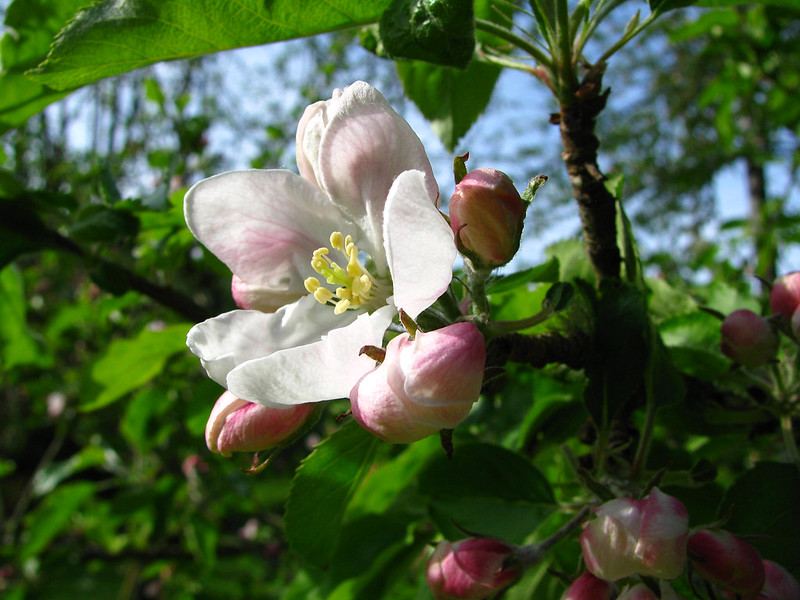
The Tompkins King wasn't far behind.
The apple trees — nonagenarians to newborns — have fully embraced the season. The first to open its flowers was the Gravenstein tree, on April 22, followed the next day by the King tree. Others followed suit in lackadaisical fashion; the Roxbury Russet and its mystery companion by our back door starting blooming on April 29th, while the Northern Spy procrastinated until May 1st.

This Baldwin whip demonstrates the results of a good graft.
The whips are too new to the world to be blooming, but they're looking vigorous. Of the 32 semi-standard and semi-dwarf rootstock, only one Sweet Bough graft seems not to have taken. The Sweet Bough scion has yet to show any swelling buds or bursting leaves. As sad as this is, it comes as no great surprise — the parent tree is struggling some in Arcadia, and was not as happy or well-established as the parents of our northern scion wood. Still, a 97% success rate is excellent, and we may be able to re-graft on to the rootstock after letting it grow for another year.
‘12
Apis Mellifera Ligustica
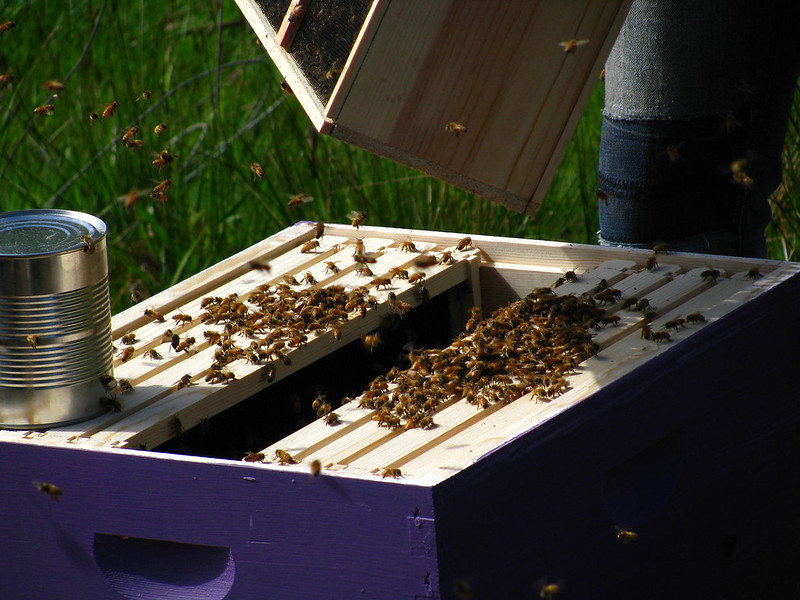
Bees crawling on the hive frames
Yesterday, we received word that our shipment of Italian honey bees (Apis mellifera ligustica) had come in. We'd ordered enough to start two hives — two queens and about 10,000 worker bees per hive.
Having never kept bees before, we were a brew of excitement spiced lightly with trepidation. I've always had a slight fear of bees (for the obvious getting-stung-by-a-bee-hurts reason), but the vast benefits for the farm and orchard far outweighed my own anxiety. We retrieved the bees from Stedman's Bee Supply and set about transitioning them to their new hives.
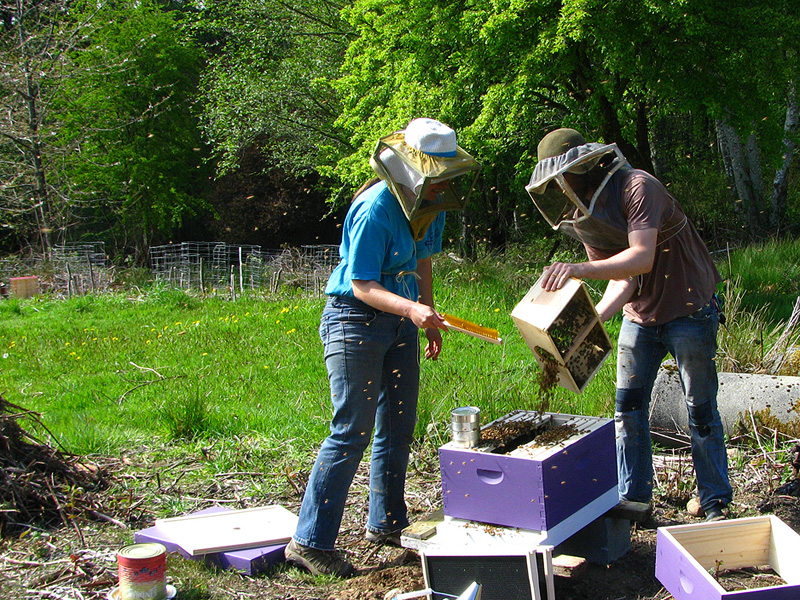
Honey bees being shaken into their new home
The bees arrive in small wooden boxes (pictures above), with all of the hive's 10,000 worker bees in a single box. The queen is isolated, so that she can be placed in the new hive first to attract the others. Once the queen has been situated, it's just a matter of dumping all the other bees out of their transport crate. As soon as they smell the queen, some of the early arrivals will start fanning her scent out into the world to attract the disoriented bees and any other bees that happen to be in the area.
The first hive went rather well. None of us got stung, and the bees seemed surprisingly placid about the whole thing. Even being vigorously shaken and brushed off so we could close the hive didn't seem to disturb the hive's equanimity.
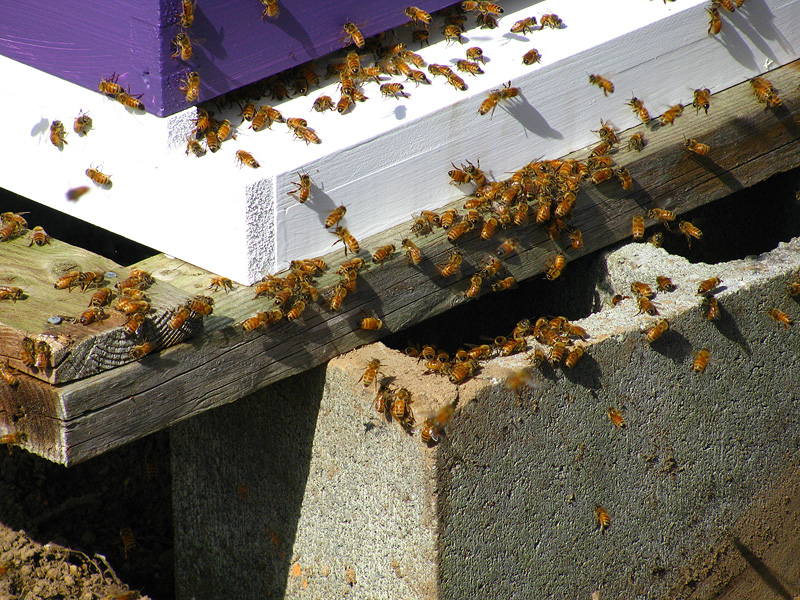
Bees checking out their new home
The second hive went somewhat less smoothly. For whatever reason, the hive started out at a higher level of agitation. After being shook into the hive, some of the bees swirling around the hive got caught in Maia's shirt — leading to a few stings in the shirt and on her arms. One more sting came when Sola was helping the remaining bees out of the shirt: a formerly-trapped bee flew to an ear and delivered a sting on the tragus. Ouch!
Despite the drama of the second hive's installation, both hives have settled and gotten down to the business of hive-building and pollination. I've spotted bees at the pear and cherry flowers, and in transit around much of the farm.
‘12
Cheep Cheep

This little Silky-cross chick was the first and fiercest — she hatched 24 hours before her kin!
One of spring's wonders is new life in all forms. We honored the season by hatching a few of our own eggs (as well as eggs from other family members who have been keeping chickens longer than we). Some of the eggs were a few weeks old, which led to an interesting hatching. Under ordinary circumstances, a clutch of chicken eggs are all supposed to hatch within 24 hours.
Rather than politely hatching all at once, our eggs peeped, cracked and hatched over a period of more than 72 hours. When all was said and done, we ended up with 16 baby chicks. Of these, two are somewhat defective, with legs better-suited for paddling like a canoe than for walking.
For more photos of the chicks at a day or two old, click on the photos below or just click here for the gallery.
